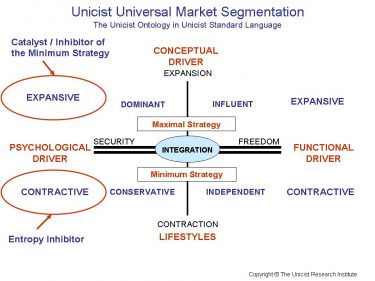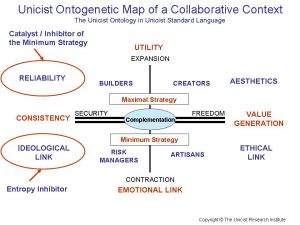A research to develop the trends on the future of consumer banking business will evolve has been launched in order to be finished before Winter/2015. Participants are being selected based on the limits established by the 70 countries on which The Unicist Research Institute has the necessary archetypical information.
Introduction
Monetary circulation has been privatized in most of the developed countries. Banks are now the main agent that fosters economic growth in developed countries.
The nature of growth requires the expansion of the monetary circulation in the economy. This expansion is given on one hand by absolute growth and on the other hand it depends on the acceleration of the circulation.
Electronic money, globalization and privatization defined the context of the new role of Banks. In the past Banks were “hygienic” aspects in economic growth.
Marketing using virtual networks is based on the use of virtual communication, semantic objects and commercial objects to build an asymmetric complementation that allows the expansion of markets.
It requires establishing a virtual collaboration context that sustains a positioning that has to be consistent with the positioning of the virtual environments where the marketing actions occur.
This marketing model uses public and private Social Networks to build the asymmetric complementation to develop prospective customers that allow expanding businesses based on a symmetric complementation.
The inputs for this research are the future scenarios for Internet, Global Consumer Markets and Virtual Collaboration that have been developed. You can access the conclusions here.
The 10-Year Future Scenario of the Internet (www)
Four segments have been identified in the Real World:
In the next ten years, within the Real World Internet, four segments that incipiently exist will be clearly developed:
The First World: It is the segment of all the websites that open the possibilities of the users by providing them a vision of the world that expands their boundaries. It is extremely democratic and ethic driven. The success of those that are in this segment depends on the capacity to adapt to changes in the environment while introducing changes to the environment. Google is an example of this segment. This segment allows using the Internet as a gravitational object to influence the behavior of the environment and as a catalyst for social actions and businesses.
The Second World: it is the world of all the servicing websites that add value to their users. This second world is more segmented and is focused on the minority that is a user of their services. It might also be multi-segmented when their service deals with social or commercial distribution. eBay is an example of this world. E-banking is also an example of this segment. Their success depends on their capacity of interpreting the needs of the segments and providing first choice alternatives for their users. This world allows using Internet as a catalyst for social actions and businesses.
The Third World: This is the world of all those that provide a space for individual exposure to their users; their value is given by their capacity to be an adequate vehicle to satisfy the individual need of being recognized. The social networks are examples of this world. This segment is based on building apparent relationships, which provide apparent recognition to the members. Their success depends on their capacity to build a true community that provides added value and not only a hollow space for individual expressions. This world allows using Internet as a vehicle for social and commercial proposals to their members.
The Fourth World: It is the world of the websites that have been built to install an organization, individuals or ideas in the Internet This segment is composed by the hygienic websites that need to exist in order to present an individual, an institution or an idea on the Internet, but that have no added value in themselves. These websites are based on the presentation of facts, actions or ideas without presenting any value adding proposal but “selling” an idea to the market. This is the massive world of the Internet that generates no feeling of belonging on behalf of the users. This world allows using Internet as a vehicle for virtual brochures for the market.
Learn more: http://www.unicistinstitute.net/blog/the-10-year-future-scenario-of-the-internet-www
The 10-Year Future Scenario of Global Consumer Markets
The use of functional, psychological, conceptual and lifestyle segmentations allows building empathic adaptive relationships with the market. There is no need to manipulate when people are understood.
The era for expansive market actions has begun. There is lots of room for small companies who do not have the capacity or possibility to expand. Manipulation will remain a natural attitude in marketing processes in spite of its paradoxical side effects.
Expansiveness implies necessarily going beyond the boundaries of the present business. It might imply expanding in width or in depth. In both cases there is a need to understand the segments that are aimed at. This understanding implies being able to model their behavior in order to use the information to design value propositions and communication.
The understanding of the different levels that participate in a buying decision help to achieve this goal and also provides the information to build commercial, semiotic and semantic objects to influence the market.
“Design globally, operate locally” has been a motto for many years. Now it became true using segmentation and commercial, semiotic and semantic objects adequately.
This approach allows upgrading the databases by integrating universal market segmentations that allow increasing notoriously the productivity of their results.
The building of functional commercial communities is meaningless without having a true segmentation of the participants.
The 10 year Future Scenario of Global Consumer Markets, defined as the era “Empathic Adaptiveness” is already here and has three names: “Design, Segmentation & Adaptive Automation”
Learn more:
http://www.unicistinstitute.net/blog/the-10-year-future-scenario-of-global-consumer-markets
The 10-year Scenario for Virtual Collaboration
Virtual collaboration is the natural way to organize when there is a need of expert knowledge. Nowadays expert knowledge can be integrated in most of the cases by using the IT technologies that allow sharing data and images.
The time saving and productivity increase is significant when the conditions for virtual collaboration are given. It allows providing full synchronicity with the needs of customers and clients.
But there are several requirements for virtual collaboration to be implemented:
- Virtual collaboration needs transparency of work become part of the culture of an organization.
- It needs reliability systems that monitor work processes.
- It requires customer orientation that fosters fulfillment, synchronicity and reliability.
- Personal roles need to be complemented by quality assurance processes to ensure results.
Learn more about the Think Tank on Business Technologies at:
http://www.unicist.org/think-tank-business-technologies.php
Peter Belohlavek
NOTE: The Unicist Research Institute was the pioneer in using the unicist logical approach in complexity science research and became a private global decentralized leading research organization in the field of human adaptive systems. It has an academic arm and a business arm.
http://www.unicist-school.org/future-research/wp-content/uploads/2014/07/turi-1.pdf



